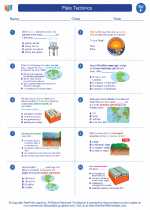Adaptation
Adaptation refers to the process by which living organisms change over time in response to their environment. These changes can occur in physical characteristics, behavior, or physiological processes. Adaptations help organisms survive and thrive in their specific habitats.
Types of Adaptations
There are two main types of adaptations: structural and behavioral.
Structural Adaptations
Structural adaptations involve physical features that help an organism survive in its environment. These can include body shape, coloration, camouflage, and specialized body parts such as beaks, claws, or teeth.
Behavioral Adaptations
Behavioral adaptations refer to the actions or behaviors that organisms exhibit to increase their chances of survival. Examples include migration, hibernation, and hunting strategies.
Examples of Adaptations
Some common examples of adaptations include the long neck of giraffes, which allows them to reach high leaves for food, the thick fur of polar bears, which provides insulation in cold climates, and the camouflage of chameleons, which helps them blend into their surroundings.
Study Guide
- Define adaptation and explain its importance in the survival of living organisms.
- Differentiate between structural and behavioral adaptations, providing examples of each.
- Choose an animal and describe its specific adaptations that help it survive in its habitat.
- Discuss the impact of environmental changes on the adaptation of living organisms.
- Explain how humans have used the concept of adaptation in agriculture and animal breeding.
◂Science Worksheets and Study Guides Sixth Grade. Plate Tectonics

 Worksheet/Answer key
Worksheet/Answer key
 Worksheet/Answer key
Worksheet/Answer key
 Vocabulary/Answer key
Vocabulary/Answer key
 Vocabulary/Answer key
Vocabulary/Answer key
 Vocabulary/Answer key
Vocabulary/Answer key
 Vocabulary/Answer key
Vocabulary/Answer key
